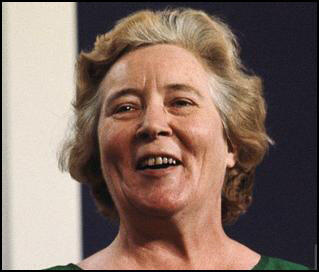On this day on 26th February
On this day in 1564 poet Christopher Marlowe, the second of nine children of John Marlowe, a shoemaker, and his wife, Katherine, daughter of William Arthur, was baptized at St George's Church, Canterbury, on 26th February 1564. The spelling of the family name was fluid. Marlowe was sometimes called Marley, Marle, Marlow, Marlo, Marlin, Morley or Merling.
Two months after his birth, Marlowe's father, became a fully-fledged Canterbury citizen. He now became a member of the Fellowship Company Craft of Shoemakers. He was now able to rent a gabled and timber-framed house near Canterbury Cathedral.
As a freeman he had the right to open his own shop, sell his services and enroll apprentices. Thirteen surviving documents reveal that John Marlowe was literate. David Riggs, the author of The World of Christopher Marlowe (2004) comments: "His ability to read is noteworthy but not remarkable. John Marlowe came of age at the historic moment when vast sectors of people who had been excluded from the educational system - small craftsmen, women, servants and apprentices - were learning to read for the first time." John Marlowe was also a parish church-warden.
Records show that in December 1578, Christopher Marlowe was enrolled as a scholar of King's School on a scholarships worth £4 per annum. He was nearly fourteen and so he seems late to be entering the school and may have been a fee-paying pupil before this.
Christian worship played an important role in the school but spent large amounts of time studying Latin and Greek.John Gresshop, the headmaster, had a great influence on him, and introduced Marlowe to the progressive ideas of Roger Ascham and Desiderius Erasmus. However, according to Park Honan, it was the study of classics that really changed him: "Marlowe was dazzled by the classics. Nothing in his imaginative life was to be the same again, and it may be that no discovery he made, and no love he ever felt, affected his mind and feelings so terribly, so unsettling, as the writers of ancient Rome."
In 1580 Marlowe went up to Corpus Christi College, on a Parker scholarship. The scholarships had been endowed by Archbishop Matthew Parker, a former master of Corpus; one of them was reserved for a King's School scholar that had been born in Canterbury. The recipients, it was stipulated, "can make a verse" and should have the "skill of song". The fact that the scholars were intended for holy orders was perhaps less congenial to him. His academic career proceeded smoothly enough. He graduated BA in March 1584, though with no great distinction, he was 199th out of 231 candidates.
Marlowe remained at Cambridge University where he wrote poetry. Marlowe's choice of Latin models - the risqué Ovid and the rebellious Lucan - is suggestive of his deviant mentality. During this period he wrote his first play, Dido, Queen of Carthage. It has been claimed that this is the first example of Marlowe's homosexuality. The opening scene "portrays a pederastic Jupiter wooing his lover-boy Ganymede in phrases that resonate with Marlowe's lyric, 'Come live with me and be my love'. Jupiter's love for his minion sets him in opposition to his wife Juno, goddess of marriage."
Richard Baines, who was at university with Marlowe, claims that he was homosexual and quotes him as saying "all they that love not tobacco and boys were fools". His biographer, Charles Nicholl, claims that his homosexuality can be inferred from some of his writings, notably The Troublesome Reign and Lamentable Death of Edward the Second, King of England. "These do not constitute proof, but add up to a convincing probability".
The last payment of Marlowe's scholarship allowance was on 25th March 1587. He received his MA four months later. In his last weeks at Cambridge he met Thomas Fineux. According to a well-informed contemporary, Simon Aldrich, young Fineux fell drastically under Marlowe's spell. Aldrich claimed that Fineux became an atheist and "would go out at midnight into a wood, and fall down upon his knees, and pray heartily that the Devil would come… He learned all Marlowe by heart... Marlowe made him an atheist."
Marlowe's first theatrical success in London was his thunderous drama of conquest and ambition, Tamburlaine the Great, based on the exploits of the fourteenth-century Central Asian emperor, Timur. It is believed that it was first performed in the summer of 1587. The play's popularity led to the sequel, The Second Part of the Bloody Conquests of Mighty Tamburlaine.
In 1588 Robert Greene, the popular dramatist of the time attacked the play for its "atheism". As Park Honan points out: "Robert Greene did not stop with a charge of atheism, though that was the most invidious and dangerous of his smears. Unable to reach a wide mass of playgoers, he tried to make Marlowe seem pretentious, absurd, and conceitedly ambitious chiefly to a group of educated fellow wits. Hence his recondite, teasing manner served well, and he probably kept up a refined fire each year until he died."
According to Paul Hyland, Marlowe was a member of "a collection of thinkers, tightly knit or loosely grouped, whose passion was to explore the world and the mind". The group included the geographers, Richard Hakluyt and Robert Hues, the astrologer, Thomas Harriot, the mathematicians, Thomas Allen and Walter Warner, and the writers, Thomas Kyd, George Chapman and Matthew Roydon. The men would either meet at the homes of Walter Raleigh, Edward de Vere, 17th Earl of Oxford, and Henry Percy, 9th Earl of Northumberland.
It has been claimed that these men were atheists. In reality they were sceptics (someone who doubts the authenticity of accepted beliefs). For example, at various times the Earl of Oxford was quoted as saying the Bible was "only... to hold men in obedience, and was man's device" and "that the blessed virgin made a fault... and that Joseph was a wittol (cuckold). Oxford did not believe in heaven and hell and declared "that after this life we should be as we had never been and the rest was devised but to make us afraid like babes and children of our shadows".
Robert Persons, a Catholic priest, published Responsio. Published first in Latin, over the next two years it went through eight editions in four languages. It included an attack on Raleigh's group. "There is a flourishing and well known school of Atheism which Sir Walter Raleigh runs in his house, with a certain necromancer as teacher." It then went on to predict that some day an edict might appear in the Queen's name in which belief in God would be denied. Persons claimed that this information came from testimony from "such as live with him, and others that see their lives". He also alleged that William Cecil and other Privy Councillors lived as "mere atheists, and laughing at other men's simplicity in that behalf".
It has been argued that Raleigh was "prone to expressions of rational scepticism, a potentially dangerous trait given the company he sometimes kept and his inclination towards discussion and debate". He was also known to be in contact with other freethinkers such as Marlowe, Harriot and Hakluyt but Robert Persons was unable to provide any hard evidence against Raleigh.
Mathew Lyons, the author of The Favourite: Raleigh and His Queen (2011) has suggested: "Raleigh was not an atheist as we understand the term: his was a muscular unadorned faith, intense in its privacy and unbreachable in its force... His kind of atheism was, in fact, viewed with perhaps even more distrust and disgust by the Protestant establishment than recusancy, and their horror of such indifference was shared across the religious divide."
John Aubrey later wrote about Thomas Allen, a astrologer and mathematician, and one of the men accused of being in Marlowe's atheist circle: "In those dark times, astrologer, mathematician and conjuror were accounted the same things, and the vulgar did verily believe him to be a conjuror. He had a great many mathematical instruments and glasses in his chamber, which did also confirm the ignorant in their opinion."
It has been argued that while at university Marlowe developed an interest in atheism. Marlowe wrote that "the first beginning of Religion was only to keep men in awe" and his advice "not to be afraid of bugbears and goblins" came from his reading of "Ovid, Lucretius, Polybius and Livy". In one of his plays, Jew of Malta, Marlowe wrote: "I count religion but a childish toy".
Richard Baines, a government spy, later reported that Christopher Marlowe was definitely an atheist. He claimed that he definitely heard Marlowe say that "Christ was a bastard and his mother dishonest". He also said that Marlowe once remarked that "if he were put to write a new religion, he would undertake both a more excellent and admirable method". Finally, he stated that Jesus Christ was a homosexual and "St John the Evangelist was bedfellow to Christ... and that he used him as the sinners of Sodoma".
In the autumn of 1592, Thomas Drury, was interviewed by the authorities about his knowledge of this atheist plot. He made a statement that revealed details about what Richard Cholmeley had told him about figures such as Christopher Marlowe, Francis Drake, Walter Raleigh, Charles Howard and William Cecil. Drury claimed that Cholmeley made accusations against most of the leaders in the government. One of his most important claims was that Marlowe "is able to show more sound reasons for atheism than any divine in England is able to give to prove divinity, and that Marlowe told him, he hath read the atheist lecture to Sir Walter Raleigh and others".
On his deathbed, Robert Greene, admitted that he once was like Marlowe "a scoffer at religion" and had denied the existence of God. He had finally repented and urged Marlowe and other Tudor dramatists to turn aside from this "diabolical atheism". He warned Marlowe to repent while there is still time, for "little knowest thou how in the end thou shalt be visited."
In the summer of 1589 Marlowe and Thomas Watson were both living, perhaps as room-mates, in Norton Folgate, Shoreditch. On the afternoon of 18th September, in Hog Lane, Marlowe and Watson fought William Bradley, son of the landlord of The Bishop Inn on Gray's Inn Road, with sword and dagger. During the fighting "Watson lunged and killed Bradley with a thrust that penetrated six inches into the right breast; and then, amidst cries of the crowd, both Watson and Marlowe waited to be arrested."
In the course of this fight Bradley was killed. Marlowe and Watson were committed to Newgate. At the inquest the following day, the Middlesex coroner recorded a verdict of self-defence. Marlowe was now released but Watson remained in prison until he was pardoned by Queen Elizabeth in February, 1590.
In 1591 Christopher Marlowe was living with Richard Baines in the little sea-port of Vlissingen. The following year Marlowe was arrested with Gifford Gilbert, a goldsmith, and both men were accused by Baines of being counterfeiters. Under examination, Marlowe admits that he was with Gilbert when he made a Dutch shilling. However, he claimed that he was only testing out the goldsmith's skills.
It has been argued that Baines had set-up Marlowe: "One day in Flushing, Gifford Gilbert minted a Dutch shilling in pewter, so false in colour that it was clearly designed as a token of his skills. Marlowe perhaps felt resigned to fate; but it appears that by taking Richard Baines at face value he lost sight of his own danger. Baines, by then, had professed warm friendship, goodwill, or an approval of coining; tactically, he may have posed as a man hoping to profit from counterfeiting himself, and so wished the two chamber-mates all success. Whatever he said makes little difference. He misled Marlowe, who grossly misjudged the spy's character and underestimated him."
Richard Baines was believed and Christopher Marlowe, Evan Flud, and Gifford Gilbert, were deported on 26th January 1592. On his return Marlowe was interviewed by William Cecil, Lord Burghley. It is not known what happened at this meeting but he was certainly free by May, 1592. It has been suggested that the reason for this was that he had been working as a spy for Cecil in Europe.
Marlowe appears to have spent the next couple of months writing The Massacre at Paris. It was apparently performed by Lord Strange's Men in January 1593. The play is a lurid account of the St Bartholomew's Day Massacre that had taken place in 1572. It was "an atrocity ingrained in the mind of English protestants, and no doubt in the mind of the young Marlowe in Canterbury, a city which received a large share of Huguenot refugees, is the most topical and overtly political of his plays."
David Riggs, the author of The World of Christopher Marlowe (2004), believes it is a poor play: "The text looks compressed and improvisatory... The metre often sounds clumsy and the imagery sometimes feels confused. Lines, and sets of lines, are carelessly repeated. When the Queen Mother rouses herself to kill her younger son, she recycles the soliloquy she had used when preparing to poison her older one.... The pace is exceedingly rapid. Two hundred and fifty speeches consist of only one or two lines."
Park Honan points out that Marlowe had set himself a difficult task: "Apart from representing 20,000 murders or so on a stage, he had to picture an immensely complicated panorama of incident and accident, political fissions and shifting alliances. He had to imagine the populace of France, characterize its leaders, and intuit meanings in the debacle." Charles Nicholl agrees and argues that "the fragmentary nature of the text is in part a deliberate technique, in which the brevity and rapidity of the scenes create a vivid kind of reportage: this has been likened to the cinematic style of jump-cutting".
In March 1593, Walter Raleigh upset Queen Elizabeth and her Privy Council, by making a speech in the House of Commons against proposed legislation to enforce religious conformity, aimed at both Catholic and Puritan dissenters. "He (Rayleigh) denounced the bill as inquisitorial, an invasion into realms of private opinion and belief that neither could, nor should, be policed." As Charles Nicholl pointed out, his opponents said he was "arguing against religious enforcement in order to protect his own illicit belief: atheism. His plea for tolerance becomes a weapon to use against him, an instance of his own non-conformity."
It is believed that the authorities decided to deal with the people they considered to be atheists. Richard Baines, a government spy, provided information to the Privy Council about his activities. On 20th May 1593 Christopher Marlowe was arrested and charged with blasphemy and treason. His friend, Thomas Kyd, was also taken into custody and after being tortured he made a confession where he claimed that "it was his (Marlowe) custom… to jest at the divine scriptures and strive in argument to frustrate and confute what hath been spoken or written by prophets and such holy men". He also suggested that Marlowe had talked about Jesus Christ and St. John as bedfellows.
Marlowe was allowed bail, on condition that he report daily to the Star Chamber. On the 30th May, 1593, Marlowe was drinking in a tavern in Deptford with Ingram Frizer, Nicholas Skeres and Robert Poley. The four men walked in the garden before having a meal together. Frizer had originally said he would pay for the food but later changed his mind. During the argument that followed Frizer stabbed Marlowe above the eyeball. The blade entered Marlowe's brain, killing him instantly.
An Inquest was held on 1st June. William Danby, Coroner for the Queen's Household, presided over the Inquest. In doing so, he acted illegally, since the country coroner was required to be on hand, according to statutory law. According to the report by Danby, "Marlowe suddenly and of malice... unsheathed the dagger... and there maliciously gave the aforesaid Ingram Fritzer two wounds on his head of the length of two inches and of the depth of a quarter of an inch." Danby claimed that Frizer, "in fear of being slain and sitting on the aforesaid bench between Nicholas Skeres and Robert Poley so that he was not able to withdraw in any way, in his own defence and to save his life... gave the aforesaid Christopher Marlowe then and there a mortal wound above his right eye of the depth of two inches."
David Riggs has questioned this account: "Since the scalp consists of skin and bone, Frizer's wounds can hardly have been a quarter of an inch deep, nor does Coroner Danby say that Marlowe attacked his companion with the point of his knife. The deposition rather indicates that Marlowe (or someone) pummelled Fritzer's scalp with the hilt of his dagger. This was a common practice in Elizabethan brawls and it had a precise connotation. Pummelling meant that you intended to hurt, but not to kill your adversary. Had Marlowe wanted to kill Fritzer, he would have stabbed him in the back of the neck. Fritzer's scalp wounds were the result of a beating rather than a stabbing."
It was later claimed that Frizer, Skeres and Poley were all government agents. Poley had worked for Sir Francis Walsingham and was a key figure in uncovering the Babington Plot. As well as being spies, Frizer and Skeres, were both involved in money-lending swindles. "Poley, Skerres and Frizer were used to operating in teams and had worked with one another before. They had practical experience in manipulating the law; they knew how to fabricate a trial narrative and maintain it under interrogation."
On 1st July 1593 Frizer was found not guilty of murder for reasons of self defence. Queen Elizabeth pardoned Frizer just two weeks later, a remarkably brief interview for a capital offence. In normal circumstances, people responsible for the death of another individual, would be kept in prison for a much longer period.
Paul Hyland, the author of Raleigh's Last Journey (2003), has suggested that Marlowe was murdered because he was suspected of being about to provide evidence against Walter Raleigh: "Marlowe had had a choice that fatal day at Deptford: to betray Raleigh or be gagged for good. Several gentleman slept more easily once he was dead."
M. J. Trow, the author of Who Killed Kit Marlowe? (2001) argues that government spies such as Richard Cholmeley had discovered evidence that William Cecil and other government figures were "sound atheists", and that Marlowe was killed as part of a cover-up of this fact.
Charles Nicholl argues in his book, The Reckoning: The Murder of Christopher Marlowe (1992). "The affray was a blind: the body that was viewed by the coroner's jury was someone else's. Marlowe was spirited out of the country, and thereafter dedicated his life to writing plays. These plays went out under the nom de plume of William Shakespeare. They contain many acrostics and anagrams that prove they are Marlowe's, but people still go on thinking they are by Shakespeare."
It has been pointed out that the first time the name William Shakespeare is known to have been connected with any literary work whatsoever was with the publication of Venus and Adonis just a week or two after the apparent death of Marlowe. However, according to Scott McCrea, the author of The Case for Shakespeare: The End of the Authorship Question (2005) the overwhelming majority of Shakespeare scholars and literary historians, believe that Marlowe was not involved in the writing of Shakespeare's play.
In October 2016 Oxford University Press decided to credit Marlowe as co-writer of the three Henry VI plays. "Using old-fashioned scholarship and 21st-century computerised tools to analyse texts, the edition’s international scholars have contended that Shakespeare’s collaboration with other playwrights was far more extensive than has been realised until now. Henry VI, Parts One, Two and Three are among as many as 17 plays that they now believe contain writing by other people, sometimes several hands.... Marlowe’s hand in parts of the Henry VI plays has been suspected since the 18th century but this marks the first prominent billing in an edition of Shakespeare’s collected works."
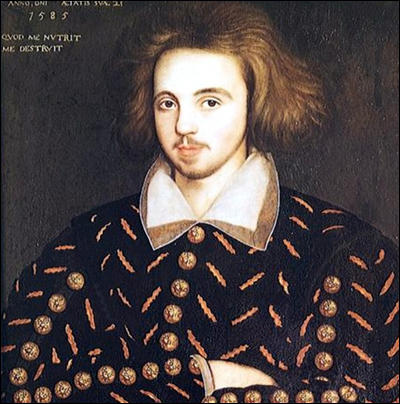
On this day in 1802 Victor Hugo was born in Besancon, France. The son of a general, Hugo was educated in Paris and Madrid. Although trained as a lawyer, Hugo wanted to be a writer and as well as producing poems and plays, he founded and edited a literary journal Conservateur Littéraire (1819-21).
Hugo's first book of poems, Odes et Ballades, was published in 1822. This was followed by Han d'Islande (1823), Nouvelles Odes (1824), Bug-Jagal (1824) and a second set of Odes et Ballades (1826).
Hugo political beliefs became increasingly more radical and in 1827 he published the verse drama, Cromwell. In the play's long preface, Hugo argued that literature should deal with the contradictions of human existence. This was followed by Orientales (1828), The Last Days of a Condemned (1829), a protest novel about capital punishment, and Hernani (1830), a play about an outlaw in conflict with society.
In 1831 Hugo published his novel, The Hunchback of Notre-Dame (1831). Set in medieval Paris, the book's central character, Quasimodo, captured the public's imagination and the book became a great success. Over the next few years Hugo wrote several plays including The King's Fool (1832), Angelo, Tyrant of Padua (1835) and Ruy Blas (1838). He also published four books of poems: Autumn Leaves (1831), Songs of Twilight (1835), Inner Voices (1837) and Sunlight and Shadows (1840).
Hugo's became increasingly involved in republican politics and after the 1848 Revolution he was elected a deputy for Paris in the Constituent Assembly. Hugo became interested in the philosophy of pacifism and in 1851 took part in the International Peace Congress in Paris where he called for the creation of a United States of Europe. Hugo was also a member of the Legislative Assembly but was forced to flee the country in 1852 after Emperor Napoleon III gained power.
Hugo lived in Brussels for a year before moving to the island of Jersey in the English Channel. Expelled from Jersey in 1855, Hugo went to live on the neighbouring island of Guernsey.
In exile Hugo produced Napoléon le Petit (1852), Les Châtiments (1853), Les Contemplations (1856) and the extremely popular novel, Les Misérables (1862), a story of a man who has been imprisoned for 19 years for stealing a loaf of bread.
Hugo's later works included the essay, William Shakespeare (1864) and three novels, The Toilers of the Sea (1866), The Man Who Laughs (1869) and Ninety-Three (1874).
Victor Hugo died in Paris on 22nd May, 1885.
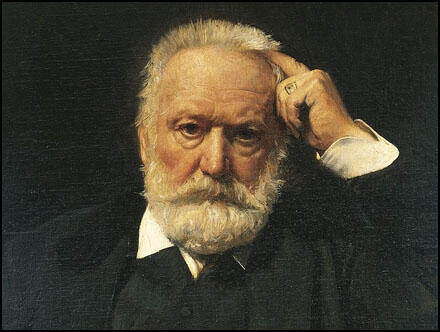
On this day in 1846 William Cody (Buffalo Bill) was born near Le Claire, Iowa. His family moved to Kansas in 1854 and settled near Leavenworth.
Cody worked as an express messenger and at the age of 12 claimed he killed his first Native American. Later he worked as a driver at Fort Laramie. Cody also attempted to make his fortune as a gold miner. This was unsuccessful and in 1860 Cody became a Pony Express rider. He later told the writer Ned Buntline that he set a record by riding 322 miles in 21 hours 30 minutes.
During the American Civil War he served as a scout for the 9th Kansas Volunteers on the Santa Fe Trail. Later he joined the 7th Kansas Volunteers.
After the war Cody worked as a stage driver from Fort Kearny to Plum Creek. In 1867 he was employed as a scout by General George A. Custer. This was followed by obtaining a contract to kill buffalo for the company supplying the food for the men building the Union Pacific Railroad. Cody later boasted of killing 4,280 buffalo in seventeen months, using a 50-clibre breech-loading Springfield rifle. Although most people thought this was a wild exaggeration he was given the nickname Buffalo Bill.
In 1868 Cody was appointed by General Philip H. Sheridan as chief scout for the 5th Cavalry. He held this post during the Republican River campaign. Along with Frank North and his Pawnee Scouts, Cody took part in the victory over Cheyenne warriors at Summit Springs, Colorado, on 11th July, 1869. Cody later claimed he had killed their leader, Tall Bull, but this was disputed by others who were involved in the operation.
As well as scouting for the army Cody worked as a guide for people wanting to hunt buffalo. This include taking Grand Duke Alexis of Russia in what became known as the Great Royal Buffalo Hunt. During this time he met the writer Ned Buntline. This resulted in the article, Buffalo Bill: King of the Bordermen, that appeared in the New York Weekly in 1869. This publicity helped Cody to be awarded the Congressional Medal of Honor.
In 1872 Cody appeared in a play in Chicago written by Buntine called The Scouts of the Prairie. It was a great success and Cody went on tour with the play. Later he appeared in Scouts of the Plains, a play written by Fred Maeder.
In 1876 Cody was back working as a scout for General George Crook in the wars against the Sioux. In July of that year he killed and scalped the Cheyenne chief Yellow Hand in battle while serving with the 5th Cavalry. The following year Cody joined up with his old friend, Frank North, to purchase a ranch on the Dismal River in Nebraska.
Cody found the work too unexciting and decided to go back to show business and in 1882 established his Wild West Show. He recruited several famous people to perform in his show including Annie Oakley, Sitting Bull, Red Cloud and Frank North. This included re-enactments of Custer's Last Stand, Native American attacks on stagecoaches and cowboys showing off their skills.
In 1887 Cody toured Europe with his show and gave a special performance in London in front of Queen Victoria and the Royal Family. The Prince of Wales (the future Edward VII) was so impressed that he saw it three times. Cody and his team also appeared in France, Spain, Italy, Germany, Austria and Belgium. In 1893 Cody's Wild West Show was the outstanding attraction of the Chicago World's Columbian Exposition.
Cody made a fortune out of his Wild West Show but bad investments caused him financial problems. In 1908 he merged his operations with Major Gordon W. Lillie's Pawnee Bill Show. This was not successful and after the partnership broke up Cody joined the Sells-Floto Circus.
William Cody went bankrupt and was deeply in debt when he died on 10th January, 1917.
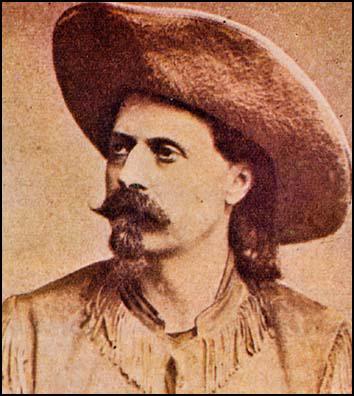
On this day in 1854 Catherine Taylor was born in Bridgewater, Somerset. Her mother, Caroline Taylor, was a founding member of the Birmingham Women's Suffrage Society. In 1873 she married Alfred Clarkson Osler, a wealthy glass manufacturer and a member of the Birmingham Liberal Association.
In 1881 Catherine Osler founded the Birmingham Ladies' Debating Society. Four years later she was appointed secretary of Birmingham Women's Suffrage Society. In 1888 she presided over a conference of the Women's Liberal Federation that was held in Birmingham.
Osler was a member of the executive committee of the National Union of Women's Suffrage Societies and she was opposed to the militant policies of the Women's Social and Political Union (WSPU). In an article in The Common Cause she attacked the actions of the WSPU.
Catherine Osler resigned as president of the Women's Liberal Federation in 1909 in protest against the government's policy of forcibly feeding hunger-striking suffragette prisoners. Her son, Julian Osler, was a member of the Men's League For Women's Suffrage. Her two daughters, Nellie and Dorothy, were members of the NUWSS.
Herbert Asquith and his Liberal Party government still refused to support legislation. At its annual party conference in January 1912, the Labour Party passed a resolution committing itself to supporting women's suffrage. This was reflected in the fact that all Labour MPs voted for the measure at a debate in the House of Commons on 28th March. Soon afterwards Henry N. Brailsford and Kathleen Courtney, entered negotiations with the Labour Party as representatives of NUWSS.
In April 1912, the NUWSS announced that it intended to support Labour Party candidates in parliamentary by-elections. The NUWSS established an Election Fighting Fund (EFF) to support these Labour candidates. Catherine Osler, who had been a long-time supporter of the Liberal Party, contributed generously to the EEF.
In July 1914 the NUWSS argued that Asquith's government should do everything possible to avoid a European war. Two days after the British government declared war on Germany on 4th August 1914, Millicent Fawcett declared that it was suspending all political activity until the conflict was over. Although the NUWSS supported the war effort, it did not follow the WSPU strategy of becoming involved in persuading young men to join the armed forces.
During the First World War Catherine Osler was a member of the executive of the Citizens Committee, which acted as a control committee for distributing grants to alleviate distress caused by the war.
Catherine Osler died on 16th December 1924.
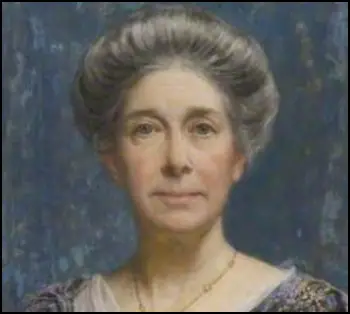
On this day in 1868 Frederick Henry Townsend was born in London. He studied at Lambeth School of Art where other students included Leonard Raven-Hill and Arthur Rackham. One of his first jobs was to illustrate two stories by Oscar Wilde that appeared in Court & Society Review.
Townsend contributed to several newspapers and magazine including Punch Magazine, The Daily Graphic, The Tatler, The Idler, The Pall Mall Gazette, The Strand Magazine, News Chronicle and Illustrated London News. Books illustrated by Townsend included Maid Marian (1895), Jane Eyre (1896), Shirley (1897), A Tale of Two Cities (1897), The Scarlet Letter (1897) and Rob Roy (1897).
In 1905 Townsend became the first Art Editor of Punch Magazine. He also contributed cartoons to the magazine and illustrated the "Parliamentary Sketches". According to Mark Bryant Townsend "used models and drew roughs in pencil on chalk-surface paper, than transferred these in pen and ink on to Bristol Board."
During the First World War he served in the Special Constabulary. He also produced several patriotic cartoons including the famous No Thoroughfare after the German invasion of Belgium.
Frederick Henry Townsend died while playing golf on 11th December 1920. He was replaced by his brother-in-law, Frank Reynolds as Punch's Art Editor.
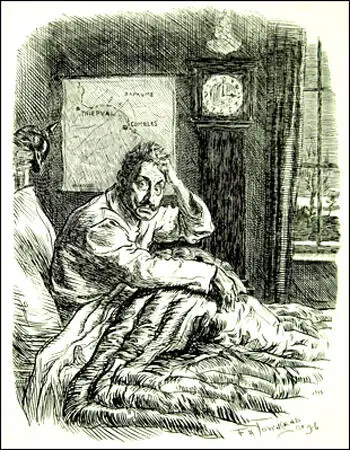
On this day in 1869 Nadezhda Krupskaya, the daughter of a military officer, was born in St. Petersburg on 26th February, 1869. A radical from an early age, Krupskaya was a committed Marxist and was the member of several illegal organizations.
Krupskaya taught in an evening school for adults and in 1894 met fellow revolutionary, Lenin. Two years later Lenin was arrested and sentenced to three years internal exile in Siberia. Krupskaya joined Lenin in Shushenskoye and they married in July, 1898. While living in exile Lenin and Krupskaya also translated from English to Russian, The Theory and Practice of Trade Unionism by Sidney Webb and Beatrice Webb.
Released in February, 1900, Krupskaya, Lenin and Jules Martov decided to leave Russia. They moved to Geneva where they joined up with George Plekhanov, Pavel Axelrod and other members of the Liberation of Labour to publish Iskra (Spark). The paper was named after a passage from a poem: "The spark will kindle a flame". Others who joined the venture included Gregory Zinoviev, Leon Trotsky and Vera Zasulich. Another revolutionary, Clara Zetkin, arranged for Iskra to be printed in Leipzig, Germany.
At the Second Congress of the Social Democratic Labour Party in London in 1903, there was a dispute between Lenin and Julius Martov. Lenin argued for a small party of professional revolutionaries with a large fringe of non-party sympathizers and supporters. Martov disagreed believing it was better to have a large party of activists. Martov won the vote 28-23 but Lenin was unwilling to accept the result and formed a faction known as the Bolsheviks. Those who remained loyal to Martov became known as Mensheviks.
Those who joined the Bolsheviks included Krupskaya, Gregory Zinoviev, Joseph Stalin, Anatoli Lunacharsky, Mikhail Lashevich, Alexei Rykov, Yakov Sverdlov, Mikhail Frunze, Maxim Litvinov, Vladimir Antonov, Felix Dzerzhinsky, Gregory Ordzhonikidze, and Alexander Bogdanov.
During the First World War Krupskaya and Vladimir Lenin lived in Switzerland. After the overthrow of Nicholas II in April, 1917, they returned to Russia. Lenin now joined with Leon Trotsky in plotting against the government being led by Alexander Kerensky. When the Provisional Government collapsed in October, Lenin and the Bolsheviks took control of Russia.
Krupskaya had opposed Lenin's calls for an early revolution but after its success she hid her political differences with her husband. In November, 1917, Krupskaya was appointed to serve under Anatoli Lunacharsky as Deputy People's Commissar of Education and Enlightenment.
Lenin's health declined after being shot by Dora Kaplan on 30th August, 1918. Two bullets entered his body and it was too dangerous to remove them. Lenin suffered a stroke in May, 1922 and a second one in December, 1922. Four days later he dictated his famous 'testament' where he assessed all the main party leaders.
Three days after writing this testament Lenin had a third stroke. Lenin was no longer able to speak or write and although he lived for another ten months, he ceased to exist as a power within the Soviet Union.
Nadezhda Krupskaya published her memoirs, Reminisces on Lenin in 1926. Nadezhda Krupskaya died on 27th February, 1939.
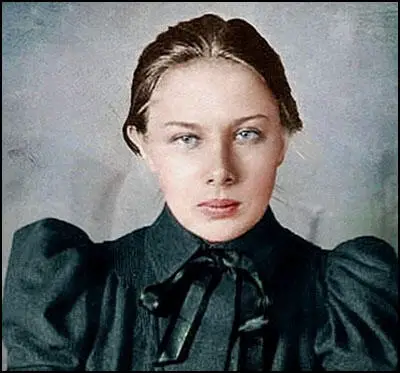
On this day in 1903 Orde Wingate, the son of an army officer, was born in Naini Tal, India. His parents were members of the Plymouth Brethren and were related to Granville Sharp, the campaigner against slavery.
Educated at Charterhouse Wingate graduated from Woolwich in 1923 and was commissioned in the Royal Artillery. He studied at the School of Oriental Studies in London before serving five years in the Sudan Defence Force (1928-33).
In 1936 Wingate joined the intelligence staff in Palestine. He was responsible for organizing, training and leading raids against Arab terrorist bases before being wounded in July 1938. After recovering from his injuries he served under General Archibald Wavell, the head of the Middle East Command.
On the outbreak of the Second World War Wingate was sent to Khartoum where he formed the Gideon Force and organized raids against Italian units on the Abyssinian border. With only a few hundred men Wingate bluffed 12,000 Italians into surrender. Wingate then joined up with General William Platt and the Sudan Defence Force and on 4th May 1941 they entered Addis Ababa.
A manic depressive, Wingate was taken ill and spent several months in a hospital in Cairo. When he recovered he joined General Archibald Wavell, the new Commander in Chief in India. Promoted to the rank of brigadier, Wingate was given permission to form the Chindits, a group of soldiers who were to be trained in jungle raiding and guerrilla tactics.
In February 1943, Wingate and 3,000 Chindits entered Burma. Their task was to disrupt Japanese communications, attack outposts and destroy bridges. The operation was very costly and of the 2,000 who returned, 600 never recovered to be able to fight again.
Orde Wingate met Winston Churchill and Franklin D. Roosevelt in August 1943 and explained his theory of Long Range Penetration. Churchill was impressed and agreed to expand the size of the Chindits and Wingate was promoted to major general and given six brigades (3rd Indian Division). Roosevelt also decided to create a similar group led by the the American officer, Frank Merrill.
Wingate returned to India in September 1943 and began to plan Operation Thursday. The plan was aimed at destroying Japanese communications from southern Burma to the those fighting General Joseph Stilwell in the north and William Slim in Imphal and Kohima.
Operation Thursday was launched by Wingate in Burma on 5th March, 1944. The Chindits established Broadway, a jungle clearing 200 miles behind Japanese lines. This included an airstrip that enabled supplies and reinforcements to be flown in and the wounded flown out.
Over the next few months the Chindits destroyed Japanese roads, railways, bridges and convoys. Once again the Chindits suffered heavy losses. Orde Wingate was himself killed when his plane crashed into a hillside near Imphal during a storm on 14th March 1944.
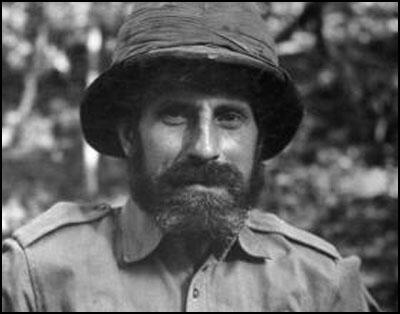
On this day in 1964 Edward Yeo-Thomas died. Yeo-Thomas was born in London on 17th June 1902. The family moved to Dieppe in France and at the age of sixteen he lied about his age in order to participate in the First World War and in 1918 served as a dispatch rider.
Yeo-Thomas fought with the White Army in Poland during the Russian Civil War in 1919. Captured by the Red Army he only escaped execution by strangling a guard. After returning to France he did a variety of jobs before finding work in a fashion house in 1932.
In 1939 Yeo-Thomas joined the Royal Air Force. He was considered to be too old for flying duties was was instead recruited as intelligence officer. In 1942 he was transferred to the French Section of the Special Operations Executive (SOE) where he became responsible for military planning.
Yeo-Thomas was parachuted into France on 26th February 1943. He joined up with Pierre Brossolette, the leader of the Comité d'Action Socialiste, and attempted to help unify the various resistance groups in France. They paved the way for Jean Moulin to be able to persuade the eight major resistance groups to form the Conseil National de la Resistance (CNR) in May 1943.
On 7th June 1943, René Hardy, an important member of the resistance in France, was arrested and tortured by Klaus Barbie and the Gestapo. They eventually obtained enough information to arrest Jean Moulin and Charles Delestraint. Moulin died while being tortured and Delestraint was sent to Dachau where he was killed near the end of the war.
Yeo-Thomas and Pierre Brossolette were in London at the time of these arrests and in September 1943 they returned to France to reorganize the French Resistance.
Back in England he met Winston Churchill who he eventually convinced to provide more financial and logistical support for the resistance. When he heard that Pierre Brossolette had been arrested he went back to France in an attempt to rescue him. This ended in failure and Yeo-Thomas was himself arrested by the French police while Brossolette committed suicide while being tortured by the Gestapo.
Edward Yeo-Thomas was tortured in Fresnes Prison. He noticed that his German interrogators made a practice, whenever he was about to faint with pain, plunged him in cold water in order to revive him. He therefore carefully observed his own symptoms as he was about to faint and then simulated them in order to reduce the period of torture.
After failing to obtain any information from Yeo-Thomas the Gestapo sent him to Buchenwald Concentration Camp. Just before he was due to be executed Yeo-Thomas, with the help of a German guard, exchanged identities with a prisoner who had died of typhus. He then managed to escape and eventually reached the Allied troops advancing through Nazi Germany.
In 1946 Yeo-Thomas gave evidence that helped to send 22 members of staff at Buchenwald to the gallows. He was awarded the George Cross and the Military Cross by the British government and after returning to France he became the Paris representative of the Federation of British Industries. Edward Yeo-Thomas died on 26th February, 1964.
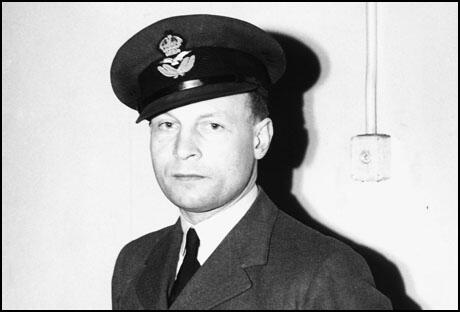
On this day in 2007 Labour MP Lena Jeger died.
Lena May was born in Yorkley, Gloucestershire, in 1915. Educated at Southgate County School. During the Second World War she worked for the Ministry of Information and was assistant editor of British Ally, a newspaper published by the British government for distribution in the Soviet Union.
Lena married Santo Jeger in 1948. A member of the Labour Party, she served on the St. Pancras Borough Council (1945-59) and the London County Council (1952-55).
Jeger was elected to represent Holborn and St. Pancras in the House of Commons in November 1953. She held the seat until the 1959 General Election when she was defeated. Jeger was a staff reporter on The Guardian until being elected in the 1964 General Election.
After retiring from parliament in 1979 she was created Baroness Jeger.
